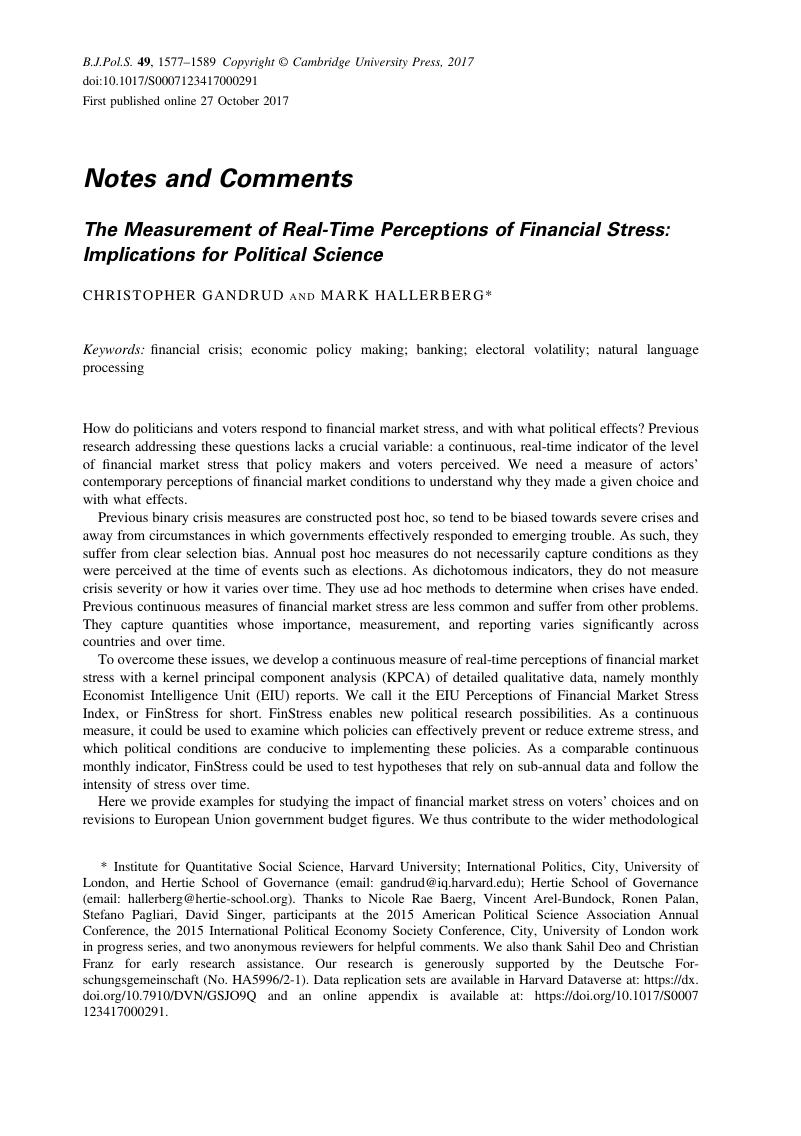Published online by Cambridge University Press: 27 October 2017

Institute for Quantitative Social Science, Harvard University; International Politics, City, University of London, and Hertie School of Governance (email: gandrud@iq.harvard.edu); Hertie School of Governance (email: hallerberg@hertie-school.org). Thanks to Nicole Rae Baerg, Vincent Arel-Bundock, Ronen Palan, Stefano Pagliari, David Singer, participants at the 2015 American Political Science Association Annual Conference, the 2015 International Political Economy Society Conference, City, University of London work in progress series, and two anonymous reviewers for helpful comments. We also thank Sahil Deo and Christian Franz for early research assistance. Our research is generously supported by the Deutsche Forschungsgemeinschaft (No. HA5996/2-1). Data replication sets are available in Harvard Dataverse at: https://dx.doi.org/10.7910/DVN/GSJO9Q and an online appendix is available at: https://doi.org/10.1017/S0007123417000291.